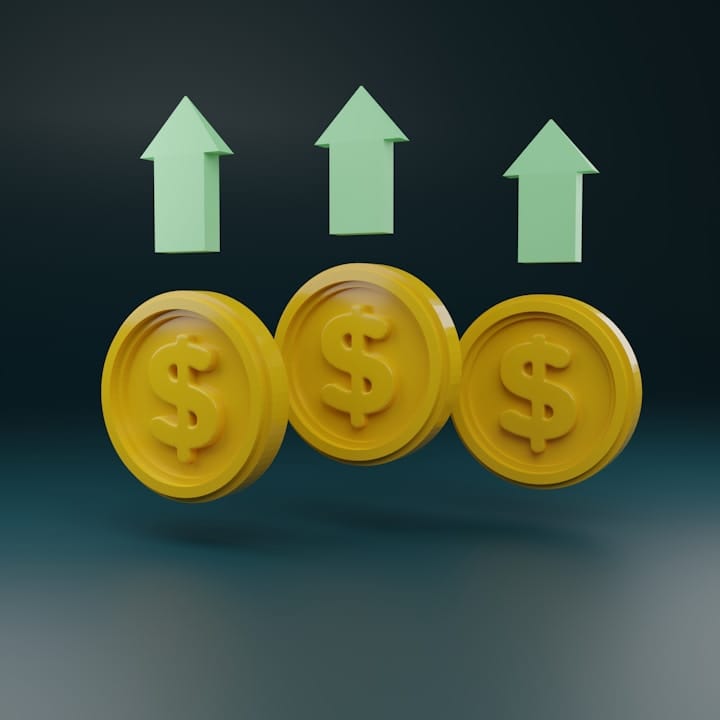Introduction
The concept of a circular economy is gaining momentum as businesses globally strive for sustainability and reduced environmental impact. Traditional linear economic models, characterized by a "take-make-dispose" paradigm, are increasingly being challenged due to the finite nature of our planet's resources. As technology startups emerge at an unprecedented rate, they have a unique opportunity to integrate circular economy principles from the ground up, fostering sustainable practices that not only reduce waste but also create long-term value.
This blog post will explore how tech startups can implement a circular economy model, emphasizing practical strategies, innovative approaches, and real-world examples that demonstrate sustainability in action. By embracing circular practices, startups can not only contribute positively to the environment but can also differentiate themselves in a competitive market, foster brand loyalty, and potentially lower operational costs.
Skip Ahead
- Understanding Circular Economy Fundamentals
- Benefits of Circular Economy in Tech Startups
- Designing for Longevity and Reusability
- Implementing Efficient Waste Management Systems
- Building Collaborative Partnerships
- Innovating through Product-as-a-Service Models
- Measuring Success and Impact
- Case Studies of Successful Circular Economy Implementations
Understanding Circular Economy Fundamentals
At its core, the circular economy is a system that focuses on the continual use of resources through reuse, recycling, and remanufacturing. It contrasts sharply with the conventional model, which typically results in discarded products that contribute to environmental degradation.
Key Principles of Circular Economy
- Design for Longevity: Products should be crafted to last longer and be easily repaired.
- Use of Sustainable Materials: Incorporating biodegradable or recyclable materials can significantly reduce waste.
- Resource Recovery: Implement strategies to reclaim materials from discarded products, allowing them to be re-entered into the production cycle.
- Product-as-a-Service: Shift focus from product ownership to service delivery, encouraging better resource utilization.
Tech startups must grasp these fundamentals to successfully adopt a circular economy model, ensuring a sustainable transition for their business practices.

Benefits of Circular Economy in Tech Startups
Transitioning towards a circular economy brings numerous benefits for tech startups, which are vital for their growth and competitive advantage.
1. Cost Savings
By reusing materials and optimizing resource management, companies can reduce production costs significantly. For example, adopting closed-loop manufacturing processes lowers material purchase costs over time.
2. Enhanced Brand Loyalty
As consumers become more environmentally conscious, brands that embrace sustainability can enhance customer loyalty. A commitment to sustainable practices resonates well with eco-aware customers, fostering trust.
3. Innovation Opportunities
Circular economy models promote innovative thinking and problem-solving, encouraging startups to develop groundbreaking products and services that utilize materials and resources efficiently.
4. Regulatory Compliance
With increasing global scrutiny on environmental practices, regulatory compliance is essential. By pre-emptively adopting circular economy strategies, startups can mitigate risks associated with regulatory changes and position themselves as leaders in sustainability.
These benefits demonstrate that implementing a circular economy model is not merely an ethical choice but a strategic business decision that can foster growth and sustainability.
Designing for Longevity and Reusability
Successful implementation of a circular economy requires products to be designed with longevity and reusability in mind.
1. Modular Designs
Adopting modular design practices allows users to replace or upgrade only the component that has worn out rather than discarding the entire product. This can apply to a wide range of tech products, from smartphones to consumer electronics.
2. Repairable Features
Incorporating repairable features into product design ensures that parts can be easily replaced or repaired, prolonging the lifespan of the product.
3. Use of Eco-Friendly Materials
Select sustainable materials that can be recycled or are biodegradable, which reduces environmental impact and enhances product end-of-life manageability.
Consider companies like Fairphone, which designs modular smartphones that promote repair and refurbishment, exemplifying how tech startups can integrate longevity into their product designs.

Implementing Efficient Waste Management Systems
In a circular economy, effective waste management is essential for minimizing landfill contributions and maximizing resource recovery.
1. Waste Audits
Conducting thorough waste audits helps identify key areas for improvement. Startups should analyze waste streams to implement targeted recycling and recovery processes.
2. Recycling Programs
Establishing recycling programs encourages customers to return unwanted products for recycling or refurbishment. Incentivizing recycling through discounts or rewards can boost participation.
3. Development of Partnerships
Collaborating with recycling firms can provide efficient waste management solutions. Consider partnering with companies like TerraCycle, which focuses on recycling difficult-to-recycle products.
By embedding waste management systems into operations, tech startups can efficiently manage resources while contributing to a sustainable economy.
Building Collaborative Partnerships
In a circular economy, collaboration and partnerships play a pivotal role in enhancing a startup's sustainability efforts.
1. Engage with Other Businesses
Form alliances with other businesses, such as suppliers, manufacturers, and service providers, to share resources and optimize the supply chain.
2. Industry Alliances
Participating in industry alliances focused on circular economy practices can offer networking opportunities and shared resources that promote learning and development.
3. Collaborate with Academic Institutions
Partnering with universities and research institutions can provide valuable insights into circular economy practices, fostering research and development that push the envelope on sustainability.
These collaborations can yield innovative applications of circular economy principles within the tech sector.

Innovating through Product-as-a-Service Models
One innovative approach within the circular economy is the shift toward product-as-a-service (PaaS) models, which alter the traditional consumer-product relationship.
1. Subscription-Based Services
Tech startups can utilize subscription models, allowing customers to use products without owning them. For example, services like Rent the Runway offer clothing rentals, minimizing waste and encouraging efficient resource use.
2. Remanufacturing and Refurbishment
Startups can implement PaaS by offering remanufactured products or upgrade options to extend the lifecycle of existing products, promoting sustainability and consumer value.
3. Lifecycle Management
Implement systems for tracking the lifecycle of products to facilitate maintenance and updates, reducing unnecessary waste.
Transitioning to PaaS models encourages more sustainable consumption patterns while providing startups with recurring revenue streams.
Measuring Success and Impact
To ensure the effectiveness of circular economy strategies, startups must establish metrics to measure success.
1. Define Clear KPIs
Key Performance Indicators (KPIs) such as waste reduction rates, cost savings, and customer satisfaction scores can provide insights into the effectiveness of circular economy practices.
2. Regular Reporting
Establish routine reporting mechanisms to assess progress towards sustainability goals. Sharing success metrics can also enhance brand transparency and appeal to eco-conscious consumers.
3. Continuous Improvement
Leverage feedback loops to make iterative changes in circular practices. Regularly assess strategies to identify areas for improvement, ensuring the continuous growth of the circular economy model.
To learn more about creating effective metrics for business performance, check out our related blog, "Metrics that Matter: How to Measure Success in Business".
Business performance metrics graph
Case Studies of Successful Circular Economy Implementations
Real-world examples serve as powerful motivators, showcasing how tech startups have successfully embraced circular economy principles.
1. IKEA
IKEA is rethinking its business model by striving for 100% renewable energy usage by 2025 and ensuring that all its products are designed using renewable or recycled materials.
2. Dell
Dell focuses on creating a circular economy through its “closed-loop” recycling initiative, ensuring that old products are reused and remanufactured.
3. Patagonia
Patagonia encourages its customers to recycle old clothing through its "Worn Wear" program, promoting the reuse of gear and furthering its commitment to environmental sustainability.
By examining these successful case studies, tech startups can draw inspiration and learn practical strategies that can easily be adapted to their own circular economy approaches.
Conclusion
Implementing a circular economy model within tech startups is not only a necessary response to environmental concerns but also a strategic opportunity for innovation and growth. By focusing on principles such as longevity in design, effective waste management, collaborative partnerships, and innovative service models, startups can forge a sustainable path forward while enhancing their competitive edge.
As the push toward sustainability becomes more pronounced, embracing circular economy practices will play a crucial role in defining the success of future tech enterprises. Creating a robust circular economy not only benefits the environment but can lead to increased customer loyalty, cost savings, and unique product offerings that meet the evolving demands of conscientious consumers.
Moving forward, tech startups should keep a pulse on sustainability trends and continuously adapt their strategies, ensuring they remain at the forefront of the circular economy movement and contribute positively to the planet.







